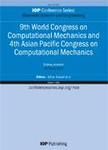版权所有:内蒙古大学图书馆 技术提供:维普资讯• 智图
内蒙古自治区呼和浩特市赛罕区大学西街235号 邮编: 010021

作者机构:Post Graduate Program of Agro industrial Technology Bogor Agricultural University Bogor Department of Agroindustrial Technology Bogor Agricultural University Bogor Indonesia
出 版 物:《IOP Conference Series: Materials Science and Engineering》
年 卷 期:2019年第536卷第1期
摘 要:This paper presents the life cycle assessment (LCA) of sugar cane production at PG Ngadirejo, that is consist of sugar cane cultivation, transportation and sugar processing. The objective of the study was to identify and review the critical areas of potential Global Warning Potential (GWP) environmental impacts in sugarcane life cycle on PG Ngadirejo. Energy consumption in the sugarcane life cycle is 116.562.52 MJ/ton sugar where the largest consumption in coal energy usage 87%. The relative contribution of CO2 emission contributor, sugar processing contributes the biggest GHG emission of 96.4% (10.728 ton CO2/ton of sugar) with the use of fossil fuels reaching 9,344 ton CO2/ton sugar (87%). In sugarcane cultivation, fertilizer manufacture contributed the largest environmental impact of 0.29 tons CO2/ton of sugar 73.48%, pesticide manufacture 22.5%, and mechanization 4%. The emission reduction from bagasse that replaces fossil fuels in sugar production is 2.43 tons CO2-eq/ton of sugar, reaching 25% of total CO2/ton sugar emissions. Some options for the environmental performance improvement of sugarcane including the optimal use of fertilizers and pesticides, the concentration of sugar mills, co-generation project implementation.